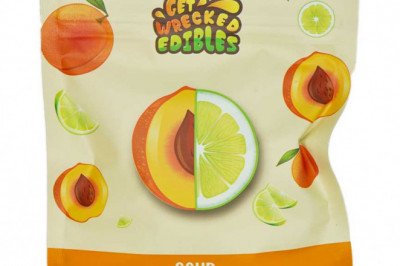views
What is NFT: Know the different types of NFT
Having an understanding of expanding markets is essential when strategizing for companies, and that includes knowing what NFT is. After all, this is one of the issues that has gained prominence around the world.
The idea that digital assets can be profitable has inspired many to look into non-fungible tokens, including big brands.
Several sectors already invest in this type of digital asset, such as fashion, art, games, sports, finance, among others. And there’s a lot of potential for use because of its versatility: virtually any piece of content can become a one-of-a-kind item.
However, some still believe that it is a temporary trend, which will not last after the hype. However, the growing interest around the asset and the arrival of web 3.0 demonstrate that this market can continue to expand.
An analysis by PWC predicts that blockchain technology (technically supported by the NFT) will inject $1.7 trillion into the global economy by 2030.
But what is NFT anyway? How are they functional? Where and how to buy this digital asset? And how can brands draw successful strategies from this technology?
What is NFT?
NFT is an acronym for “Non-fungible Token” which, in free translation into Portuguese, means non-fungible tokens.
It is an electronic symbol created on a blockchain platform to represent some good considered unique, such as a work of art, a tweet, a collectible item and even a virtual property.
To be more clear about what NFT is , it is necessary to understand the concept of fungible and non-fungible assets. Basically, in economics, the term refers to the interchangeability of goods.
A fungible good is one that can be easily replaced by another of the same type, quality and quantity, as is the case with coins.
Non-fungible goods, on the other hand, are unique and cannot be replaced by another identical good due to their unique characteristics. Works of art and collectibles are some examples.
In a financial transaction, the fungibility or non-fungibility of an asset affects its value and determines how the item will be exchanged or traded.
For example, commodities — such as wheat, soybeans and corn — are easily interchangeable, as regardless of where they were grown, they will have the same monetary value if they have the same characteristics.
In contrast, a painting by a famous artist will have its value determined by factors such as provenance and condition. Furthermore, even if a representation of that canvas is made, the replica will not have the same value as the original piece.
This same concept is applied to NFT Marketplace, which have as one of their main characteristics that they are not interchangeable. Therefore, each digital asset has its own value and cannot be replaced by another identical token, which makes it unfungible.
In other words, NFT is an asset created to represent the identity of a unique item, be it real or virtual, and attest to the ownership of that particular good.
PFP NFT
Profile photo NFTs (PFPs) as you can imagine are an NFT that is used on a recurring basis as your profile photo on different social networks, mainly on Twitter. The first NFT PFPs were CryptoPunks, which were created in 2017 by Larva Labs, who maintain their cult status now shared with other PFPs such as Bored Ape Yacht Club , Azuki or Clonex. A large number of PFP main projects carry an average price above ten thousand euros.
As the metaverse continues to grow, it’s likely that more PFPs will be used as avatars within those platforms as well.
NFT sports collectibles
The world of sports is one of those with the most fans and fans spread around, so it is not surprising that it is a growing category. This type of NFT transforms classic trading cards into NFTs, with the best-known example being NBA Top Shot Moments, videos that capture memorable plays during NBA games.
Another important segment is also the famous Fantasy League where friends compete in virtual leagues. Platforms like Sorare have provided an NFT layer to this widespread training.
Generative Art NFT
Generative art NFTs have their roots in a computer-controlled abstract art style of the 1960s. Using artificial intelligence tools, a specific aesthetic is generated using a set of artist requirements. Art Blocks is one of the main projects in this segment.
NFT the P2E
Play-to-earn (P2E) game NFTs are also known as GameFi. Historically, online games have offered in-game assets to enhance the experience, such as weapons and armor that can be purchased from within the game itself. In this case, these assets are NFTs and can be purchased both online and in secondary markets such as OpenSea.
Popular examples like Axie Infinity and Gods Unchained give players ownership of their rewards and the ability to sell and trade their earnings for in-game assets. There is also a subcategory of NFTs that involve real-world participation, such as Stepn, which classifies itself as a “move to earn tokens” game.
NFT the fashion
The fashion sector is one of those that is exploring the world of NFTs the most. Renowned brands like Tommy Hilfiger and Dolce & Gabbana have released collections of digital-only clothing that are sold as NFTs for avatars to wear within metaverse platforms like Decentraland.
But the great leg of this sector are surely the “phygital” experiences, where the barrier between the digital and physical product narrows.
Utility NFTS
Some NFTs are being used to link digital tokens with real world rewards and experiences. There are NFTs that fall into one of the above categories and also add utility, adding value like club membership, access to IRL experiences, or being able to redeem exclusive physical goods.
Projects like the Bored Ape Yacht Club mentioned above, offer exclusive access to parties and events. Projects like the PROOF collective offer benefits for future releases, including the Moonbirds project. Nike with its RFTK project offers digital and physical items for its Clone X collection holders. Article By : Nft Marketplace Development Company











